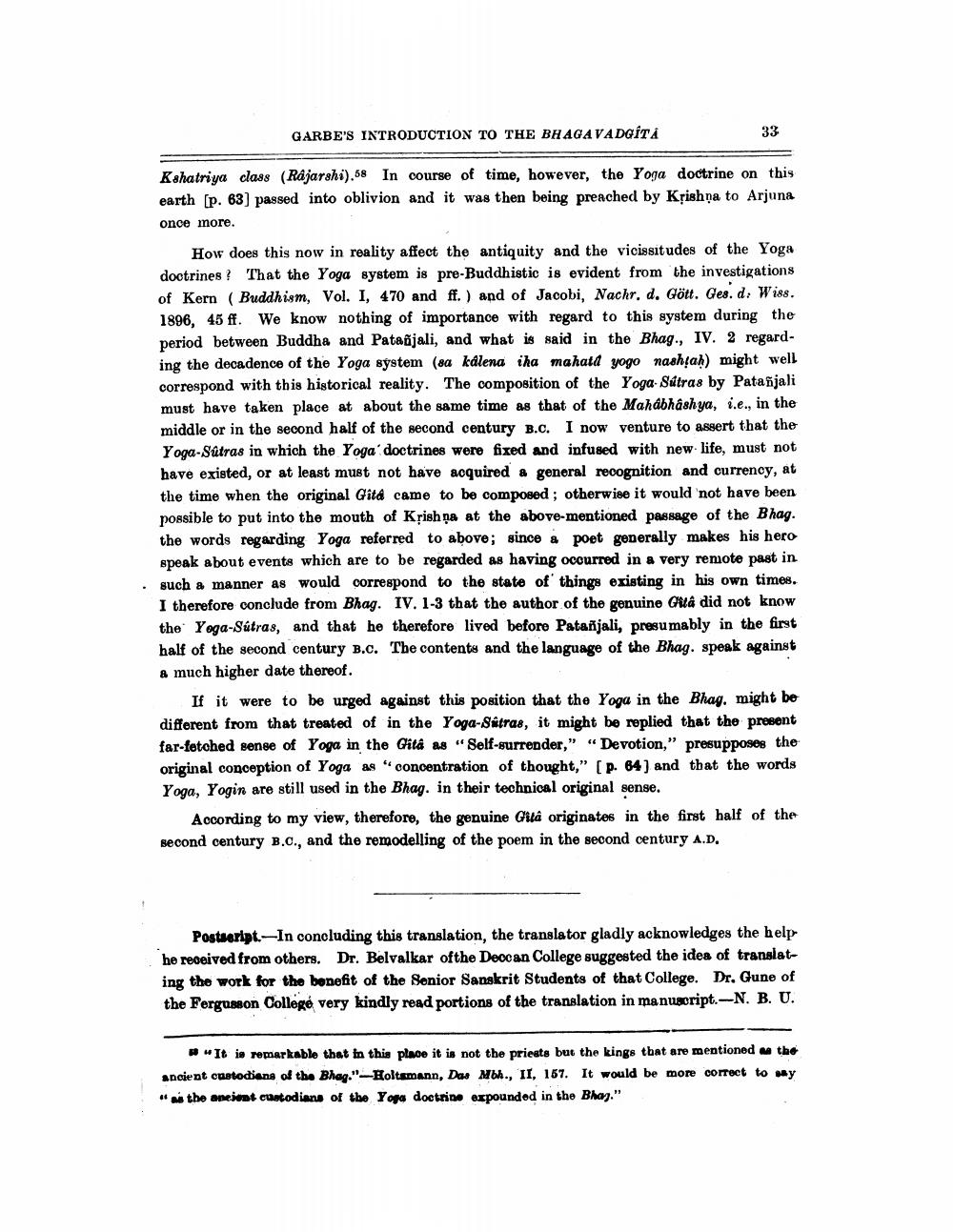________________
GARBE'S INTRODUCTION TO THE BHAGAVADGITA
33
Kshatriya class (Rajarshi).58 In course of time, however, the Yoga doctrine on this earth [p. 63) passed into oblivion and it was then being preached by Kțishņa to Arjuna once more.
How does this now in reality affect the antiquity and the vicissitudes of the Yoga doctrines? That the Yoga system is pre-Buddhistic is evident from the investigations of Kern (Buddhism, Vol. I, 470 and ff.) and of Jacobi, Nachr, d. Gött. Ges. d: Wiss. 1896, 45 ff. We know nothing of importance with regard to this system during the period between Buddha and Patañjali, and what is said in the Bhag., IV. 2 regarding the decadence of the Yoga system (sa kalena iha mahatd yogo nashtah) might well correspond with this historical reality. The composition of the Yoga-Sutra8 by Patanjali must have taken place at about the same time as that of the Mahabhashya, i.e., in the middle or in the second half of the second century B.C. I now venture to assert that the Yoga-Sutras in which the Yoga' doctrines were fixed and infused with new life, must not have existed, or at least must not have acquired a general recognition and currency, at the time when the original Gita came to be composed; otherwise it would not have been possible to put into the mouth of Krishna at the above-mentioned passage of the Bhag. the words regarding Yoga referred to above; since a poet generally makes his hero speak about events which are to be regarded as having occurred in a very remote past in such a manner as would correspond to the state of things existing in his own times. I therefore conclude from Bhag. IV. 1-3 that the author of the genuine Gità did not know the Yoga-Sútras, and that he therefore lived before Patañjali, presumably in the first half of the second century B.c. The contents and the language of the Bhag. speak against a much higher date thereof.
If it were to be urged against this position that the Yoga in the Bhag, might be different from that treated of in the Yoga-Sútras, it might be replied that the present far-fetched sense of Yoga in the Cità as "Self-surrender," " Devotion," presupposes the original conception of Yoga as concentration of thought,” (p. 64 ) and that the words Yoga, Yogin are still used in the Bhag. in their technical original sense.
According to my view, therefore, the genuine Gita originates in the first half of the second century B.C., and the remodelling of the poem in the second century A.D.
Postseript.- In concluding this translation, the translator gladly acknowledges the help he received from others. Dr. Belvalkar ofthe Deccan College suggested the idea of translating the work for the benefit of the Senior Sanskrit Students of that College. Dr. Gune of the Fergusson College very kindly read portions of the translation in manusript.-N. B. U.
# "It is remarkable that in this place it is not the priests but the kings that are mentioned the ancient custodians of the Bhag."-Holtamann, Das Mh., II, 167. It would be more correct to my " the ancient custodians of the Yoga doctrine expounded in the Bhay."




